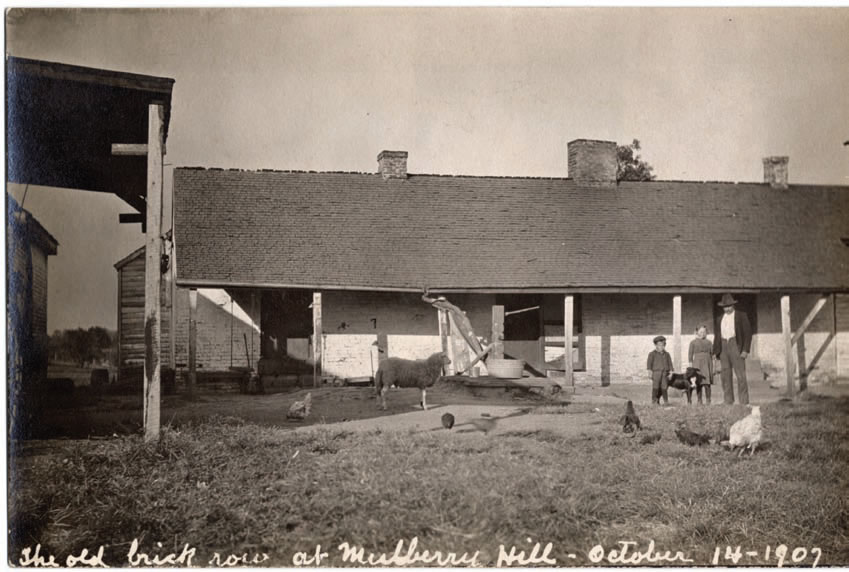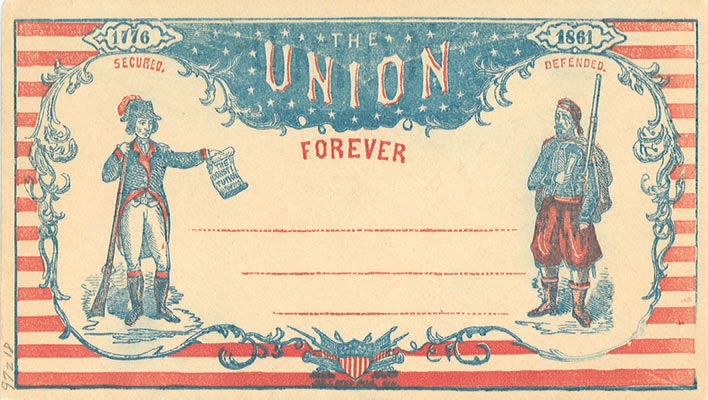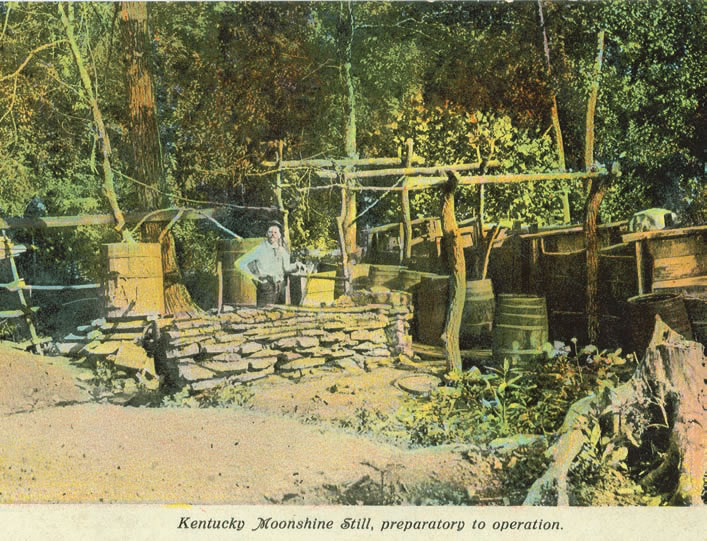From Frontier to Border State
The Filson Historical Society's Museum
By Kelly E. Williams
Special Collections Projects Assistant
About |
 The Filson Historical Society’s museum houses a permanent collection of nearly 10,000 artifacts that relate to Kentucky’s rich history and culture. Newly renovated exhibits in the museum, located in the Carriage House behind the Ferguson Mansion, highlight the development of Kentucky from an unexplored frontier to a vital border state during the Civil War.
The Filson Historical Society’s museum houses a permanent collection of nearly 10,000 artifacts that relate to Kentucky’s rich history and culture. Newly renovated exhibits in the museum, located in the Carriage House behind the Ferguson Mansion, highlight the development of Kentucky from an unexplored frontier to a vital border state during the Civil War.
Tracing the evolution of Kentucky from its pristine beginnings, a series of exhibits illustrate natural factors that made the region exceptionally well suited for white settlement. Salt deposits attracted
wild game, creating rich hunting grounds. Additionally, this valuable salt could be mined and used in the preservation and cooking of meats. Native populations had relied on these salt deposits for generations and the encroachment of white settlers into their territories created intense conflict between the two cultures. Infringed upon by settlers and enticed by western trade goods, Indian communities often abandoned traditional craftwork, ceremonial and hunting customs in an effort to adapt and survive in their changing environment. Tens-kwau-ta-waw, a Shawnee leader more commonly known as “The Prophet,” articulated his sentiment on these shifts in a speech urging Indians to shun white ways and return to their traditional beliefs. An engraving of The Prophet is on display.
Some of the most striking artifacts on display also date from this period of early settlement in Kentucky. Portraits of individuals such as Daniel Boone, George Rogers Clark and William Clark help put a face to men who played a vital role in the early settlement of the region. Tools and housewares used by early settlers illustrate daily life on the frontier. These include a powder horn, compasses, surveying equipment and several lighting devices. Other items on exhibit include Clark family relics, such as a foot warmer, cross necklace and china dishes.
 The same natural resources that had drawn settlers into the region fostered the rapid development of a vibrant economic system. Rich soil provided land ideal for farming tobacco, hemp and corn. The natural salt deposits allowed the development of salt works that could produce large quantities of valuable salt. Illustrating this diverse economy is a still used by Kentucky moonshiners to convert excess corn into whiskey, a salt kettle from a local salt works and several farm tools used in the harvesting of tobacco crops.
The same natural resources that had drawn settlers into the region fostered the rapid development of a vibrant economic system. Rich soil provided land ideal for farming tobacco, hemp and corn. The natural salt deposits allowed the development of salt works that could produce large quantities of valuable salt. Illustrating this diverse economy is a still used by Kentucky moonshiners to convert excess corn into whiskey, a salt kettle from a local salt works and several farm tools used in the harvesting of tobacco crops.
In part, early development in Kentucky was fueled by the labor of slaves, working both in agriculture and manufacturing. Though slaves comprised only a small portion of the state’s population, their contribution to Kentucky’s economy was integral. Photographic images on display illustrate the stark contrast in housing standards between the elite white population and their slaves. Broadsides for the trade of slaves, along with tools commonly made and used by slaves, illustrate the daily living conditions for Kentucky’s bonded population.
Despite being a slave state, Kentucky’s population was torn between those with pro and anti-slavery sentiments. Many Kentuckians viewed the “peculiar institution” of slavery as a necessary evil, needed to maintain social and economic ways of life; others viewed slavery as an abhorrent practice that should be abolished. In 1860 and 1861, as the southern states began to secede from the Union, Kentucky’s citizens continued to be divided between those favoring the North versus the South. This divide, which continued through the war, is illustrated through the politics of Abraham Lincoln and Jefferson Davis, both natives of Kentucky. Exhibited letters written by Kentuckians also articulate each side of this heated debate. An 1862 letter written for publication by an unidentified Kentuckian argues that the state’s interests are with the South. Patriotic stationary was another popular form of expression during the sectional conflict and several envelopes denouncing the Confederacy are on display.
 The exhibit looks at how the Civil War impacted both Louisville and the state as a whole. As a border state with ties to both the Union and the Confederacy, Kentucky declared its neutrality as the sectional
The exhibit looks at how the Civil War impacted both Louisville and the state as a whole. As a border state with ties to both the Union and the Confederacy, Kentucky declared its neutrality as the sectional
conflict turned violent. By late 1861, however, Kentucky was overwhelmingly Unionist and the state legislature officially declared its allegiance with the Northern states. Within months, the city of Louisville became an armed camp with as many as 80,000 Union soldiers in the city, which was surrounded by military hospitals, earthwork trenches and forts. Uniforms, weapons and military medical kits depict the war experience of soldiers. Engravings portraying Louisvillians fleeing the city due to the threat of Confederate invasion provide an excellent illustration of the conflict’s impact on everyday life.
As the exhibit traces the evolution of Kentucky’s economy from a newly explored territory of Virginia up through its role as a vital border state during the Civil War, there is something to learn for patrons of all ages. The museum is an excellent tool for teachers, students and the general public. Self-guided tours are free to the public and are a perfect way to learn more about Kentucky’s rich history.
The Filson Historical Society
1310 South Third Street - Louisville, KY 40208
Phone: (502) 635-5083 Fax: (502) 635-5086
Hours
The Ferguson Mansion and Office
Monday - Friday: 9 am. - 5 pm.
Saturday and Sunday closed
Library and Special Collections
Monday - Friday: 9 am. - 5 pm.
First Saturday of each month: 9 am. - 4 pm
